
Final LRV Parking Places
Copyright 2005 by Eric M. Jones. All rights reserved.
Last revised 25 October 2005.
Introduction
On 9 September 2005, Ralph Roncoli at the Jet Propulsion Laboratory asked if I was aware of any detailed information on the final LRV parking locations for Apollo 15, 16, and 17. A search of my collection of documents - and a parallel search by archivist Shelly Kelly at the University of Houston at Clear Lake - yielded only Figure 6-13 ( 0.2 Mb ) in the Apollo 16 Preliminary Science Report ( 59 Mb PDF ), showing that LRV parked on a southerly heading 48 meters from the LM on an azimuth of 88 degrees. Otherwise, we only have rough distances given by the Commanders in the form of visual estimates and/or LRV Nav System readouts which, necessarily, have uncertainties of up to 50 meters.
Estimating LRV Locations from Mission Photographs
Apollo 17
Estimating Distance: After parking the Rover east of the LM, Gene stood near the back of the Rover and took AS17-143-21933 toward the LM.
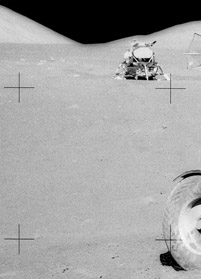
Detail from AS17-143-21933.
The image has been scaled to give the same reseau-cross spacing as the detail from AS17-134-20442, below.
Click on the image for a larger version.
Gene's distance from the LM can be estimated by comparing the apparent size of the LM in 21933 with the LM image size in a photograph taken from a known distance. In the following analysis, I assume that the linear size (height or width) of an image is inversely proportional to distance from the camera. Because the film plane in the Hasselblad cameras were flat, this assumption is not strictly correct. However, the LM image sizes in 21933 and 20442 do not differ greatly, so the error introduced by assuming inverse proportionality will be relatively small.
AS17-134-20442 is a frame from the partial pan Gene took at the SEP deployment site.
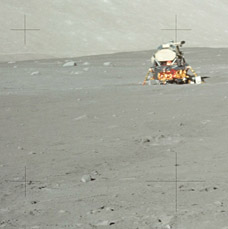
Detail from AS17-134-20442.
Click on the image for a larger version.
As indicated in the righthand half of Figure 6-98 (next) in the Apollo 17 Preliminary Science Report ( 89Mb PDF ), Gene took the partial pan 144 meters from the LM.
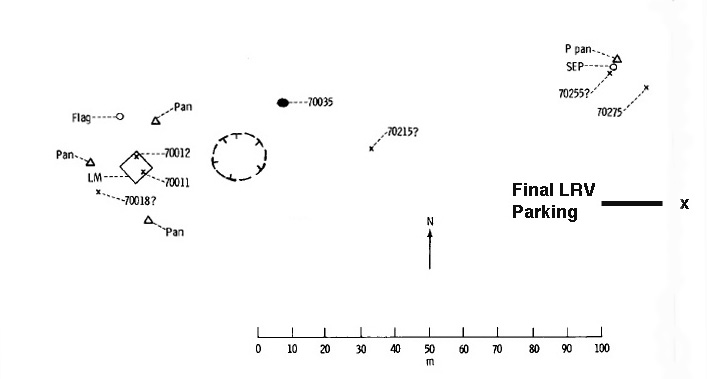
SEP partial pan location in Figure 6-98.
The location of the final parking place added.
After rotating 20442 to make the top line of the LM horizontal, the two images were overlayed in Adobe Photoshop and 21933 was scaled up so that two LM images had the same vertical spacing between various prominent features on the spacecraft. This process indicated that 21933 was taken at a distance 1.10 times farther than 20442, or 158 meters.
Estimating Azimuth: As can be seen in the detail from 21933, above, the LM lines up with a subsidiary, western peak on (West) Family Mountain ( 1.5 Mb ), giving an azimuth from the LM to the final parking place of 94 degrees. This location has been added to the righthand side of Figure 6-98 (above).
As a final check, I examined the video taken from the final parking place. In one sequence taken after LM liftoff, Ed Fendell scanned the region north of the Rover at maximum zoom and found the SEP transmitter. I have not attempted to determine an accurate azimuth, the SEP transmitter is clearly west of north as seen from the parked Rover.
I conclude that the Apollo 17 LRV was parked about 158 meters behind the LM on an azimuth of about 94 degrees.
Apollo 16
Estimating Distance: In the Apollo 16 LM Area plan map (below), the final parking place is shown east of the LM at a distance of about 49 meters.
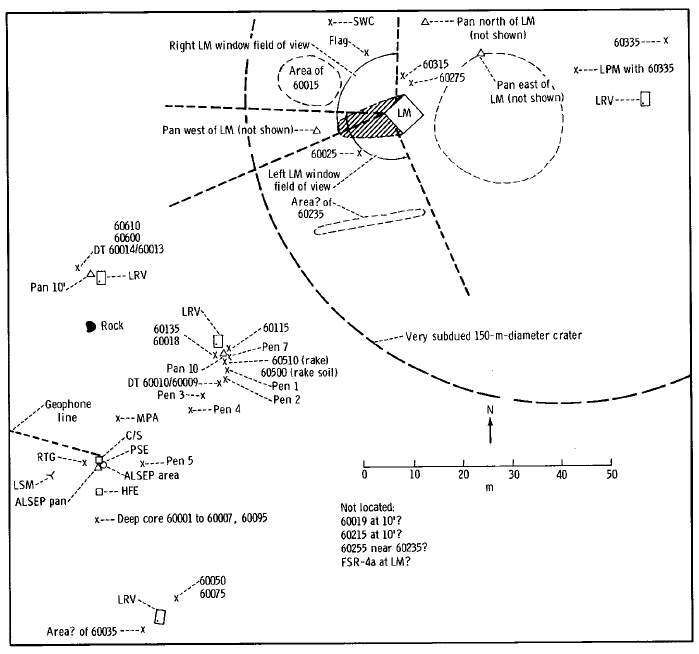
Figure 6-13 from the Apollo 16 Preliminary Science Report
John Young took a photograph from the final parking place, AS16-116-18715 (below), toward the LM.
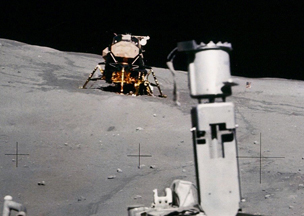
AS16-116-18715, detail of A16 LM from Final Parking Place.
Click on the image for a larger version.
As indicated on the LM Area plan map (above), Charlie Duke took a pan from near the Rover at Station 10', 72 meters southwest of the LM.
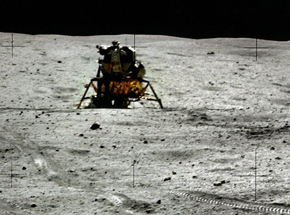
AS16-117-18816, detail of A16 LM from Station 10'.
Note that 18816 and 18715 are shown with the same reseau-cross spacing.
Click on the image for a larger version.
As was done with the two Apollo 17 photographs, these were rotated to get the top of the LM images horizontal and, then, scale adjustments were match the LM image sizes. The result is that 18715 was taken at a distance 1.12 times great than 18816 or 81 meters.
Estimating Azimuth: Comparing photographs taken out the two LM windows after landing, it is evident that John landed with the spacecraft facing directly down-Sun. At that time, the solar azimuth was 88 degrees.
An examination of 18715 suggests that John parked the Rover along the LM's Z (fore/aft) axis and that the azimuth of the parking location is about 88 degrees.
I conclude that the Apollo 16 LRV was parked about 81 meters behind the LM on an azimuth of about 88 degrees.
Apollo 15
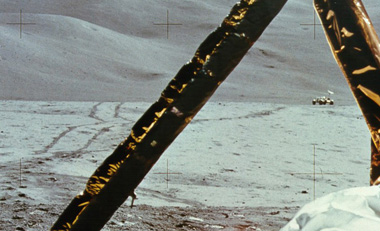
Detail from AS15-88-11930 showing LRV from LM.
Click on the image for a larger version.
Estimating Distance: After Dave Scott returned to the LM from the final parking place, he took a photo (above) of the Rover past the north side of the LM.
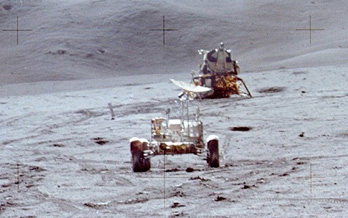
Detail from AS15-87-11852 showing the LRV and LM from the ALSEP Site.
Click on the image for a larger version.
Earlier, Jim Irwin took a pan (D-16) at the ALSEP site, including frame 11852 (above). The locations are shown in Figure 5-52 (next) from the Apollo 15 Preliminary Science Report ( 53 Mb PDF ).
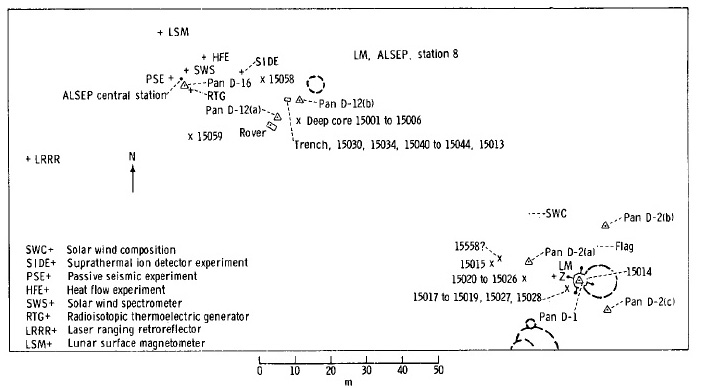
Figure 5-52 from the Apollo 15 Preliminary Science Report.
Jim Irwin's pan (D-16) was taken near the Central Station.
In 11852, the Rover is 26 meters from the D-16 pan location. After application of appropriate rotations and scaling, a comparison of the LRV indicate that 11930 was taken at a distance 6.35 times greater than 11852. The distance from the LM to the final parking place is, then, 165 meters.
Because the Rover images in 11930 and 11852 differe so greatly in size, uncertainties in the dervied distance are probably large, too. An alternative analysis can be done with the LM image in 11852 and the LM image AS15-88-11895, which Dave took from near the final parking place. I currently only have a low-resolution scan of 11895.
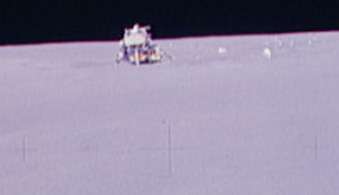
Detail from low-resolution scan of AS15-88-11895, showing the LM from near the final parking place.
Jim took 11852 at a distance of 123 meters from the LM. A comparison of 11852 and 11895 gives a distance from the LM to the final parking place of 163 meters.
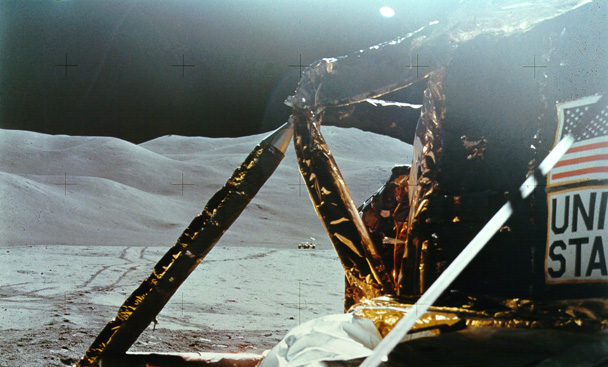
Detail from AS15-88-11930, showing the horizon beyond the final parking place.
Estimating Azimuth: We can see in 11930 that, at the time Dave Scott took the picture, the Sun was at a more southerly azimuth than the LRV and that the latter was in line with the summit of Big Rock Mountain (named for Rocco Petrone) in the Swann Range (named from Gordon Swann).
From the LM, the azimuth of the Big Rock summit is 102 degrees and, at the time Dave took the picture, the solar azimuth was 111.7 degrees, as indicated in a labeled detail (next) from a Defense Mapping Agency Lunar Topographic Orthophotomap of Hadley.
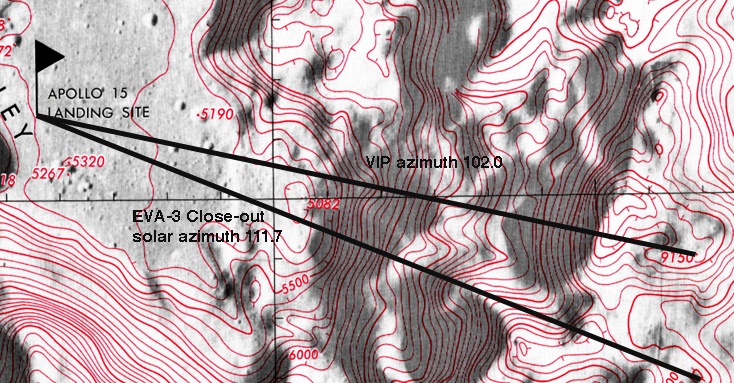
Map detail showing azimuth from the LM of the Sun (111.7 degrees) and the summit of Big Rock Mountain (102.0 degrees).
I conclude that the Apollo 15 LRV was parked about 165 meters behind the LM on an azimuth of about 102 degrees.
Comparison of TV Images of the LMs
at Maximum Zoom
from the Final Parking Places
To the extent that, at a particular zoom setting, the height or width of the LM image is inversely proportional to the distance from the LRV TV camera, we can compare image sizes to gauge the relative accuracy of derived distances. Because it is farily obvious in the television record when Fendell reaches maximum zoom - at the end of a long, continuous increase in zoom - image comparisons were made with the cameras in this configuration. The final column of the following table lists the LRV distance multiplied by the Max Zoom image size and, to the extent that the foregoing analyses don't have major errors, the values in the final column should be similar.
| Mission |
LRV Distance
(m) |
LRV Azimuth
(deg) |
Relative
Max. Zoom
Image Size |
Distance
x
Image Size |
| Apollo 15 |
165 |
102 |
1.00 |
165 |
| Apollo 16 |
81 |
88 |
1.65 |
134 |
| Apollo 17 |
158 |
94 |
0.91 |
144 |
The rough agreement in the final column between Apollo 16, which had a much smaller LRV distance and a much larger Max Zoom image, and the two more distant cases, gives some confidence in the overall results and suggest distance uncertainties of roughly 10 meters. Note, also, that two Rover images used to derive the Apollo 15 distance were very different in size and, therefore, that that analysis undoubtedly has the greatest uncertainty.
Journal Home Page












